
—
Graphic by Isabel Zacharias.
For each of the 365 days that make up a year, there’s a constant question in the back of our staff’s minds as we listen to new releases: Could this be one of them? This consideration in the background is how we attempt to surmise what’s going to be the best of the best. It makes our top 10 albums list one of the most well-researched endeavors we pursue at KMHD.
We believe these are the best albums the artists we play have created this year, and the key word is “albums.” These sonic experiences are best to be experienced as a whole. We also believe they deserve a place in your collection and sincerely hope that you’ll enjoy them as much as we have.
-Matt Fleeger, Program Director
The Midnight Hour – S/T (Linear Labs) | Well, you've heard of Ali Shaheed Muhammad (Q. You mean the producer from A Tribe Called Quest? A. Yes, the guy from A Tribe Called Quest.) You might not think you're as familiar with Adrian Younge, but if you caught any of the "Luke Cage" web series, you've already unwittingly heard Younge's distinct hip-hop spin on television scoring; ditto his soundtrack for the film "Black Dynamite" and his production work for the likes of Kendrick Lamar and Ghostface Killah.
Both Muhammad and Younge are legends in their own right, and it’s almost needless to say that this record they’ve made together belongs in this year’s essential listening, of any genre. “The Midnight Hour” recontextualizes hip-hop as something that belongs at a small jazz venue, attended by intellectuals in button-down shirts and dresses — except that everyone’s duds end up sweaty from dancing, since this is, after all, an Ali Shaheed Muhammad production.
There are lush string sections. There are “dirty” rimshots (as Younge describes them). There are traditional acoustic jazz trio arrangements. And there’s a loose snare sound at the front of the mix. This is equal parts jazz and hip-hop, in such pristine balance as to have perhaps never been heard before. With an array of big-name features that reaches from Questlove to Stereolab’s Laetitia Sadier to Digable Planets’ Ladybug Mecca, “The Midnight Hour” comes from exactly the place it should: one of effortlessness and the kind of sophistication that can only be earned with decades of experience in a genre.
– Isabel Zacharias

—
Cover art by Damon Locks, courtesy of International Anthem.
Makaya McCraven – "Universal Beings" (International Anthem) | On his latest album, drummer, bandleader and producer Makaya McCraven takes his live-then-reworked song technique on the road.
Instead of recording these songs all in one live session or in a single club, McCraven explores his own unique drumming style with soloists from some of the most vital jazz scenes of the world: London, Los Angeles, New York and of course, Chicago.
Beyond McCraven's formidable drumming and editing styles, though, this is an album that sounds like the scenes it was created in. In this way, the record functions as a sort of core sample of the current jazz star-date we're living in. Plus, it's high time that jazz becomes danceable again — and you can certainly shake it to "Universal Beings."
– Matt Fleeger
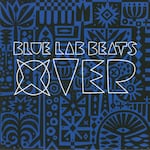
—
Cover art by Jules Mann, courtesy of Ferocious Talent.
Blue Lab Beats — "Xover" (Ferocious Talent) | The jazz mentality in the U.S. often operates from a lonely place of insularity. "That's not jazz." "Someone call the jazz police!" This attitude has done the music little service, which helps explain why a teenage duo from London, a city that celebrates jazz without boundaries, has created this modern masterpiece.
Namali Kwaten (NK-OK) & David Mrakpor (Mr. DM) perform as Blue Lab Beats, cooking up genre-ignoring grooves in Kwaten’s studio, the Blue Lab. This sonic laboratory also happens to be his bedroom in his parent’s home. That little studio birthed a batch of songs that were fiercely fleshed out at Real World Studios with a rotating crew of some of the freshest talents in London.
Jazz pianist Ashley Henry brings an elegiac beauty to “Blue Skies," dropping a blues-rich improvisation atop the pulsing beat. Leadoff single “Pineapple” showcases the summery guitar work of Mr. DM in perfect unison with Moses Boyd’s crisp and economical drumming. Every track on “Xover” brims with imagination.
– Derek Smith
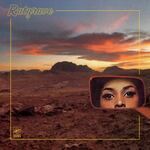
—
Courtesy of Apron Records.
Ratgrave — S/T (Apron) | I pity the listener who pigeonholes beatsmith Max Graef as a house artist. When not DJing around Berlin, he listens almost exclusively to jazz and hip-hop — two genres meaningfully cross-pollinating more and more with house rhythms.
Here, Graef teams up with like-minded producer Julius Conrad for a record that a film critic might laud as, “A Romp!” Their 11-track creation, “Ratgrave," came into the world with next to no ceremony: a Bandcamp release on the UK-based imprint Apron Records provides little more than the inscription, “Electronic P-Fusion from Earth. Recorded over a period of 3 years in different locations. Stop Wars and investors.”
Yes, there’s an irreverence here, a post-Thundercat prioritization of groove over song form and the electric bass as a melodic funk machine. Ratgrave’s self-titled does not entertain hesitation. It’s dry, crisp and driving here; then dark, almost sloppy there — often within the same song. Really, it’s the textures of “Ratgrave” that infuse the experience of it with such wild joy.
– Isabel Zacharias
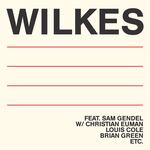
—
Courtesy of Leaving Records.
Sam Wilkes — "Wilkes" (Leaving) | On Sam Wilkes' first album as a leader, his bass virtuosity takes a bit of a backseat to his composition style. That's not to say that instrumentalism isn't top-notch here, but Wilkes defers to neo-West-Coast jazz conspirator Sam Gendel's unique saxophone sound, which is used to accentuate the sometimes-soft, sometimes-penetrating vibe that this record conveys to the listener.
Though the record shares the laid-back sophistication of classic West Coast jazz, the most obvious musical cues “Wilkes” takes are from the ambient explorations of Brian Eno or Harold Budd rather than Stan Getz or Chet Baker. Call it what you want — maybe “ambient,” maybe “lo-fi” — but this sound is permeating the scene in LA, and no one in our opinion is doing it more interestingly than Wilkes and his crew.
– Matt Fleeger

—
Courtesy of 22a.
James "Creole" Thomas — "Omas Sextet" (22a) | During the interlude track "Melting Pot," a woman's voice intones: "The Creole is like the prototype of a melting pot. You have to recognize that you are part of many ethnicities. You're a combination of everything and I think recognizing that diversity is unique because you say this is who I am. You accept me the way I am."
Omas Sextet beautifully embodies this idea of diversity, bringing together three musician brothers living in London with their Mauritius-based elder cousin James ‘Creole’ Thomas. Their collective efforts have yielded an intoxicating fusion of the tropical rhythms of Thomas’ homeland with the future-jazz sounds of cosmopolitan London.
The dynamic percussion provided by the brothers offers a clear snapshot of jazz as a fluid art form where vintage island rhythms run seamlessly into broken beat and hip-hop grooves. In a world of tossed off singles, this debut recording demands to be called an album.
– Derek Smith
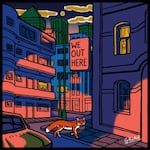
—
Cover art by Gaurab Thakali, courtesy of Brownswood Recordings.
Gilles Peterson — "We Out Here" (Brownswood) | Mark down 2018 as the year that London came calling to the U.S. and beyond with the sound of jazz refreshed. In March, Austin's SXSW Festival hosted a London jazz showcase that stunned the audience with its audacity.
“We Out Here” arrived in February, providing a crash course into a scene operating with an abundance of creative expression and youthful vigor. While the album, on first blush, appears to be a compilation, it actually is much more than the sum of its parts. With Sons of Kemet leader Shabaka Hutchings acting as musical director, the nine sonic strands on the album are woven together into a stunning tapestry of influences, offering the listener a portal into the London’s prosperous musical underground.
From the insistent Afrobeat grooves of Ezra Collective to the righteous saxophone statements of Nubya Garcia, this community of musicians reminds us of the unlimited potential of jazz to transform culture and move assuredly beyond genre labels.
– Derek Smith
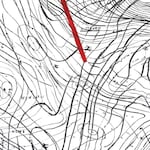
—
Courtesy of The Vinyl Factory.
Emma-Jean Thackray — "Ley Lines" (The Vinyl Factory) | In a contemporary jazz landscape characterized by collaboration, Emma-Jean Thackray is a total auteur. The UK-based producer, composer, beat-maker, multi-instrumentalist, singer, bandleader and DJ donned all her hats at once to record "Ley Lines," a confident and consistent debut LP that more than justifies Gilles Peterson's longtime insistence on Thackray as "the future" of London's jazz-not-jazz movement.
If Thackray had made “Ley Lines” with a band, that band would’ve totaled over thirty members. It’s her singing the choral parts, both women’s and men’s voices, silken and clean; it’s her crafting the rapturous Afrobeat rhythms (“I’d get obsessed with Tony Allen, do my own versions,” she told Downbeat); it’s her playing trumpet and clarinet and saxophone and drums and keyboards.
This self-containment speaks to the strength of vision Thackray possesses, and it’s the image of all this careful construction taking place in her South London flat that demonstrates just how far she’ll go. You’d expect such a record to look inward, but instead, “Ley Lines” looks out, addressing the colorful, real world buzzing around it.
– Isabel Zacharias

—
Courtesy of Pat Van Dyke.
Pat Van Dyke — "Hello Summer" (self-released) | Recorded over a six-month period in his New Jersey studio, Pat Van Dyke's newest labor of love communicates a message of wonder and beauty. Here you'll find delightfully arranged horns, upbeat grooves and a sonic space where good vibes abound.
This was our favorite album of the summer, a listening experience that can mentally transplant one to another climate; beyond the solid horn arrangements and solos, Van Dyke plays almost every instrument on the record (a la Prince). It is his drumming style, however, that holds this music together. No matter what mood you’re in, it’s our opinion that listening to this album can make you feel better.
– Matt Fleeger

—
Courtesy of 22a.
Tenderlonious — "The Shakedown" (22a) | Ed 'Tenderlonious' Cawthorne ran afoul of the law in London, finding himself at a crossroads. A soprano saxophone glowing golden in a music shop window helped determine his path.
He would practice religiously, teaching himself first that opportune sax and then the flute, following in the footsteps of one of his chief influences, Yusef Lateef. Fast forward 10 years to March 2017 and another opportunity presents itself with a ringing cellphone: An engineer from Abbey Road Studios offers the flutist one day to record.
“The Shakedown” is the result of that single eight-hour session recorded by a group Tenderlonious assembled on the fly. Each tune offers up an exciting blend of polyrhythms and textured keys, setting the stage for Tenderlonious to season the proceedings with both flute and synths. At its core, “The Shakedown” is a perfect groove record, offering up spiritual intentions for your soul even as the rhythms compel you to get down.
– Derek Smith
Stream KMHD's Best Albums Of 2018
The Best Of 2018
Top Stories (OPB) | Photos (OPB) | Videos (OPB) | Conversations (Think Out Loud) | Arts (State of Wonder) | Albums (opbmusic) | Songs (opbmusic) | Sessions (opbmusic) | Jazz Albums (KMHD) | Jazz Singles (KMHD)
